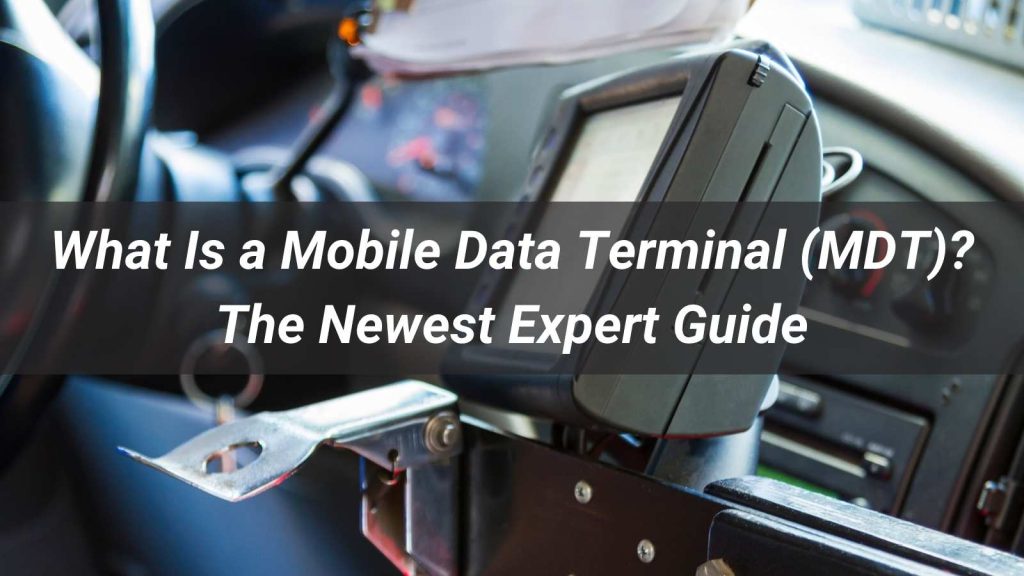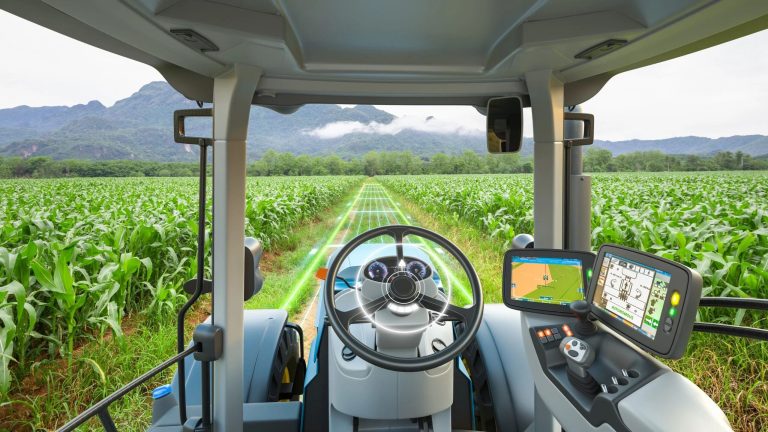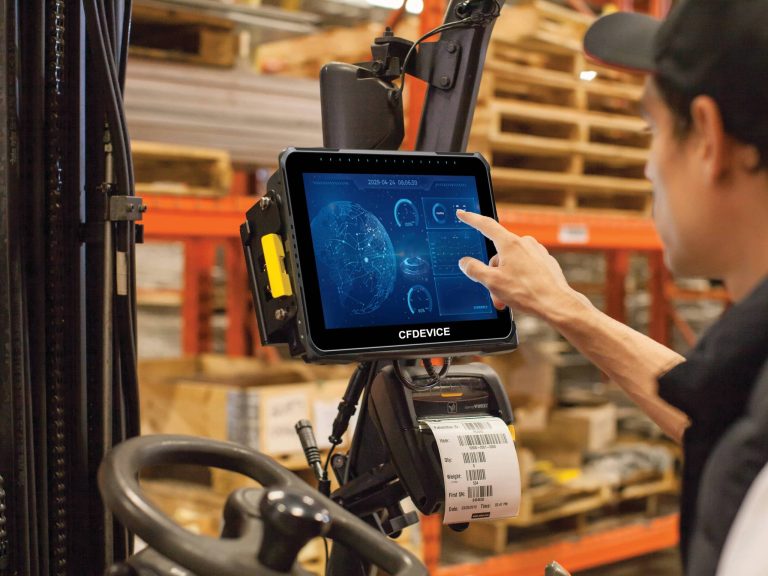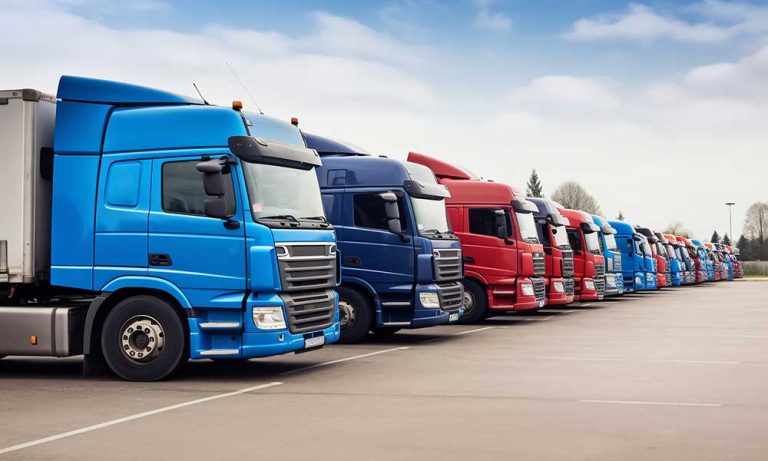Ever wondered how police officers access criminal records from their patrol cars? Or how delivery drivers optimize routes in real time? What if your field team could eliminate paperwork while boosting productivity by 30%? These are just a few of the challenges modern Mobile Data Terminals (MDTs) are solving across industries today.
A Mobile Data Terminal is a rugged, purpose-built computing device that connects field personnel to central systems through secure wireless networks. Combining military-grade durability with enterprise software, MDTs empower real-time communication, GPS navigation, and digital workflow automation—transforming how mobile teams operate in 2025.
This guide will explore how cutting-edge MDTs work, why they’ve become indispensable, and what innovations like AI and 5G mean for their future—keep reading to discover how these devices can revolutionize your field operations.

What is a Mobile Data Terminal (MDT)?
In today’s digitally-driven field operations, a Mobile Data Terminal (MDT) represents the critical nexus between mobile workforces and centralized command systems. These specialized computing devices are engineered to withstand the rigors of field use while delivering real-time data connectivity that transforms operational efficiency. Unlike consumer-grade tablets, MDTs combine ruggedized construction with enterprise-grade security protocols and purpose-built software to create a reliable communication hub for mission-critical applications.
The fundamental architecture of an MDT integrates multiple technological components into a cohesive system. At its core lies a high-performance processor capable of handling complex data streams, coupled with advanced wireless communication modules supporting 5G, Wi-Fi 6, and dedicated GPS positioning. The human-machine interface typically features sunlight-readable touchscreens with glove-compatible operation, often supplemented by physical keyboards for rapid data entry in high-stress environments. These terminals are designed to operate seamlessly across temperature extremes, from freezing winter conditions to scorching summer heat, ensuring uninterrupted service when reliability matters most.
How MDTs Have Evolved
- 1980s–1990s: Bulky, text-only devices with limited functionality
- 2000s: Touchscreens and GPS navigation transformed fleet management
- Today: AI-powered, cloud-connected platforms with AR capabilities and predictive analytics
Why MDTs Are Indispensable
MDTs boost efficiency by replacing paper processes with digital workflows, cutting errors by up to 80%. They enhance safety with real-time tracking and emergency alerts while optimizing routes to save fuel and time. For modern operations, MDTs aren’t just tools—they’re the backbone of smarter, faster decision-making.

What Can a Mobile Data Terminal Do for Your Operations?
Mobile Data Terminals (MDTs) serve as powerful digital hubs that transform field operations across industries. These rugged devices go beyond basic communication, offering a suite of integrated functions that boost efficiency, accuracy, and real-time coordination for mobile teams.
At their core, MDTs enable seamless two-way communication between field personnel and command centers. Police officers receive silent dispatch alerts, delivery drivers get instant route updates, and utility technicians access real-time work orders—all through secure, encrypted connections. The terminals’ advanced GPS capabilities provide turn-by-turn navigation while automatically logging vehicle locations, helping fleets optimize routes and reduce fuel costs by up to 15%.
MDTs also excel at digital data capture, replacing error-prone paper processes with streamlined electronic reporting. Field teams can submit inspection reports, collect customer e-signatures, and update inventory systems on the spot. When integrated with enterprise software like ERP and CRM platforms, these terminals create a closed-loop system where field data automatically syncs with back-office systems—eliminating duplicate entry and ensuring everyone works with current information.
From public safety to logistics and field service, organizations using MDTs report 30% faster response times and 25% fewer operational errors. As these devices evolve with AI and cloud capabilities, their role in powering efficient, data-driven field operations continues to expand.

Real-World Applications of Mobile Data Terminals Across Industries
Mobile Data Terminals (MDTs) have become essential tools that bridge the gap between field operations and central management systems. These rugged devices combine specialized hardware with customized software to deliver powerful solutions tailored to specific industry needs. In public safety applications, police MDTs transform patrol vehicles into mobile command centers, giving officers instant access to criminal records, real-time dispatch updates, and silent alert capabilities that enhance officer safety during critical situations.
The transportation sector leverages MDT technology to revolutionize delivery operations and fleet management. Logistics companies equip drivers with these terminals to automatically track shipments, capture digital proof of delivery, and receive dynamic route adjustments based on live traffic conditions. The integration of GPS tracking with MDTs enables dispatchers to monitor vehicle locations in real-time, optimizing delivery schedules and improving customer satisfaction through accurate ETAs.
Utility companies and field service organizations rely on MDTs to streamline their mobile workforce operations. Technicians use these devices to access equipment schematics, update work order statuses, and collect customer signatures directly in the field. The ability of MDTs to function in extreme weather conditions and harsh environments makes them particularly valuable for utility crews working during power outages or infrastructure emergencies. Across all these applications, Mobile Data Terminals demonstrate their versatility by combining robust hardware with intelligent software to solve real operational challenges.
How Mobile Data Terminals Transform Police Vehicle Operations
Modern police cruisers rely on Mobile Data Terminals (MDTs) as mission-critical tools that significantly enhance officer safety and operational efficiency. These rugged in-vehicle computers serve as the nerve center for law enforcement activities, providing instant access to critical databases that allow officers to quickly verify vehicle registrations, check for outstanding warrants, and review criminal histories without returning to the station. The real-time communication capabilities of police MDTs enable silent dispatch updates and secure messaging, maintaining officer discretion during sensitive operations.
Beyond information access, today’s advanced MDTs streamline essential police workflows through integrated features. Officers can complete detailed incident reports directly from their vehicles, with some systems even offering voice-to-text transcription to minimize distractions while driving. The navigation functionality in police MDTs goes beyond standard GPS, incorporating emergency routing that accounts for road closures and calculates the fastest response paths during critical situations. These terminals often integrate with in-car camera systems, automatically linking video evidence to corresponding case files.
The implementation of Mobile Data Terminals in law enforcement vehicles has demonstrated measurable improvements in police operations. Departments utilizing MDTs report faster response times, more accurate data collection, and reduced radio traffic congestion. As these systems continue to evolve, many are incorporating predictive analytics that can alert officers to potential high-risk situations based on historical data patterns. For modern policing, MDTs have become indispensable tools that enhance both officer safety and community protection while maintaining crucial records for judicial proceedings.
Key Differences Between Mobile and Fixed Data Terminals
Mobile Data Terminals (MDTs) and fixed terminals serve distinct purposes in modern operations, each designed for specific environments and use cases. MDTs stand out for their rugged portability, built to withstand the demands of fieldwork with battery-powered operation and wireless connectivity options like 5G and Wi-Fi. These characteristics make them ideal for vehicle installations and mobile professionals who need reliable computing in transit. In contrast, fixed terminals typically remain stationary at retail counters or industrial workstations, drawing continuous power from electrical outlets and often utilizing wired network connections for stable data transmission.
The operational differences between these systems extend beyond their physical characteristics. MDTs excel in dynamic situations where real-time data access is critical – police cruisers using MDTs for instant license plate checks or delivery drivers updating shipment statuses while on route. Fixed terminals, however, specialize in consistent, high-volume processing at specific locations, such as point-of-sale transactions in retail environments or quality control stations in manufacturing plants. While MDTs prioritize mobility and durability with features like sunlight-readable displays and shock-resistant casings, fixed terminals often incorporate larger screens and more powerful processors suited for extended use at a single location.
Choosing between Mobile Data Terminals and fixed terminals ultimately depends on operational requirements. Field-based industries like law enforcement, field service, and transportation overwhelmingly benefit from MDTs’ combination of durability and wireless functionality. Meanwhile, settings requiring uninterrupted power and maximum computing performance at fixed locations typically find greater value in stationary terminal solutions. Understanding these fundamental differences helps organizations select the right technology to optimize their specific workflows and operational environments.
Exploring Common Data Terminal Variants Across Industries
Various specialized terminals serve distinct data input needs in today’s digital workflows, with Mobile Data Terminals (MDTs) leading the pack for field operations. These rugged devices dominate mobile applications where durability meets functionality – from police cruisers accessing criminal databases to delivery trucks tracking shipments in real-time. Unlike stationary alternatives, MDTs combine wireless connectivity with hardened designs to withstand vibrations, temperature extremes, and occasional impacts common in vehicle-mounted or field environments.
Retail and hospitality sectors typically employ Point-of-Sale (POS) terminals, which specialize in secure payment processing and inventory management at fixed locations. Warehouse operations increasingly rely on hybrid systems pairing barcode scanners with mobile computers that share some MDT characteristics but focus specifically on inventory tracking. Industrial settings often utilize rugged tablets that blur the lines between MDTs and traditional computing devices, offering touchscreen functionality in environments where consumer-grade tablets would fail.
Conclusion
Mobile Data Terminals (MDTs) have evolved into indispensable tools for modern field operations, combining rugged hardware with intelligent software to bridge the gap between mobile teams and central systems. These specialized devices excel in real-time communication, GPS navigation, and digital data capture—transforming industries like public safety, logistics, and field services through enhanced efficiency and accuracy.
The 2025 landscape sees MDTs integrating cutting-edge technologies like AI analytics, 5G connectivity, and edge computing, enabling predictive maintenance and offline functionality. With measurable benefits including 30% faster response times, 20% fuel savings, and near-elimination of paperwork errors, MDTs are no longer optional but strategic necessities for competitive operations.
As organizations prioritize digital transformation, investing in advanced MDT solutions ensures readiness for future challenges while optimizing current workflows. From police cruisers to delivery fleets, these terminals continue redefining mobile operations—proving that in our connected world, MDTs are the backbone of smarter, safer, and more efficient field work.
Further Reading
- Top 10 Best Linux Tablets for 2025
- What are computer controlled devices in agriculture?
- Linux Vehicle Mount Computers: Seamless Integration with Your Existing Systems
- MDM and MAM: What is the Main Difference?
- Exploring the Top 10 Manufacturers of Ag Leader Sprayer Monitors
- Top 10 Embedded Box Computer Manufacturers in the World 2025














